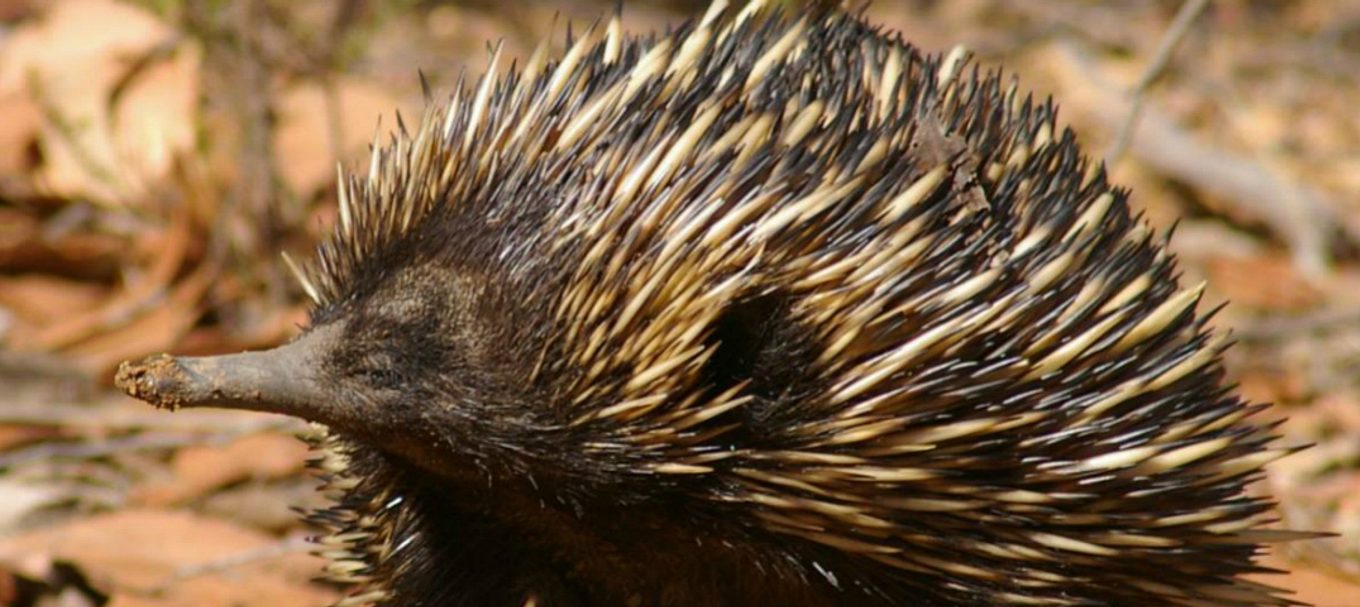
7 things you might not know about echidnas
08 Oct. 2020 4 min read
They’re spiky, slow-moving and native to Australia but there is much more to short-beaked echidnas – also known as spiny anteaters – than meets the eye.
South Australia is home to lots of amazing native species, and these guys are no exception. They can be found in many of South Australia’s national parks and aren’t as rare as you might think.
Make sure you’re on point with your echidna knowledge when you next spot one in the wild. Here are some fun facts:
1. Their spines are actually specialised hair
Believe it or not, the spines you see on an echidna are actually an enlarged, tough form of hair.
These spines are an echidna’s main line of defence when predators strike. When under threat, they will roll up into a ball of radiating spines to protect themselves or dig themselves to safety.
As well as being covered in spines, echidnas are also covered in shorter fur to keep them warm.
2. They have different coloured spines
Echidnas found in South Australia tend to be much darker in colour than their eastern states counterparts.
For example, echidnas from south-east Queensland are a lot lighter and can almost look like they have ‘blonde highlights’ from the year-round sun! Pure white and even red-headed echidnas have been spotted on Kangaroo Island.
3. They form mating ‘trains’ during breeding season
From mid-May to early September, male echidnas actively seek out females to mate.
They form a line known as an ‘echidna train’, with the female leading the ‘train’, followed by up to ten males. A smaller, younger male is often at the rear of the line.
The male suitors follow the female for long distances until the female is ready to mate.
She then lies relaxed and flat on her stomach and the males that formed the ‘train’ dig a circular trench around her. Eventually the largest male pushes the competing rivals out of this ‘mating rut’.
He then digs more dirt out from the spot where the female’s tail is resting, lies on his side and places his tail under hers, and they mate.
Prickly Love: Echidnas Caught Mating | National Geographic
4. Male echidnas have a four-headed appendage
Now you know about an echidna’s mating ritual, you might also be interested to know that male echidnas have a very unique reproductive organ – a four-headed penis.
‘So how on earth does that work?’ we hear you ask. When mating, two of the heads ‘shut down’ while the other two grow larger to fit inside the female echidna’s two-branched reproductive tract.
Echidnas alternate which heads they use when mating with different partners to improve their chances of becoming a dad!
5. They lay eggs
Along with the platypus, the echidna is the only other living egg-laying mammal species.
Almost a month after mating, the female deposits a single, soft-shelled, leathery egg into her pouch. The gestation period is quite quick – after only ten days the baby echidna hatches.
Baby echidnas are called ‘puggles’. They stay within the den their mother creates for up to a year before going it alone.
6. Who needs teeth anyway?
Echidnas are actually toothless mammals, but they more than make up for it with their long, sticky tongues. When we say long, we mean it. We’re talking 15 centimetres.
Their tongues work very quickly, enabling them to slurp up ants, worms and insect larvae. In fact, the echidna’s scientific name, Tachyglossus actually means ‘fast tongue’ – quite fitting!
7. They’re made for digging
The claws on an echidna’s hind limbs are curved backwards to help them dig, which is another way they help protect themselves from danger as they can dig their way out of trouble.
Learn more about South Australia’s furry creatures by reading our blogs on how to identify animal poo,everything you need to know about Granite Island’s little penguinsandwhat you might not know about wombats.
This story was originally posted in January 2019.





